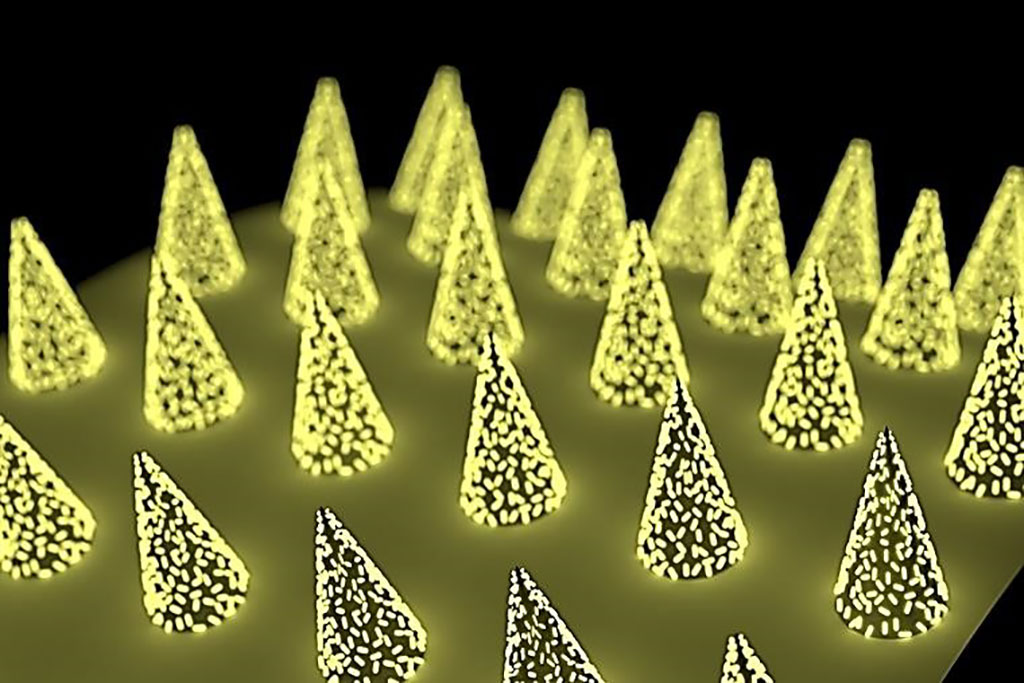Biosensing Microneedle Patch Quantifies Biomarkers in Interstitial Fluid
By LabMedica International staff writers
Posted on 10 Feb 2021
Interstitial fluid (ISF) compared with other peripheral biofluids such as saliva, sweat and tears is a particularly rich source of soluble bioanalytes including proteins, peptides, metabolites and nucleic acids that exhibit close correlation with blood. Posted on 10 Feb 2021
ISF is a rich source of biomolecules, densely packed with everything from neurotransmitters to cellular waste. However, to analyze biomarkers in ISF, conventional method generally requires extraction of ISF from skin. This method is difficult and usually the amount of ISF that can be obtained is not sufficient for analysis. That has been a major hurdle for developing microneedle-based biosensing technology.

Image: A microneedle patch has been developed that can be applied to the skin, capture a biomarker of interest from interstitial fluid and, due to its unprecedented sensitivity, allow clinicians to detect its presence (Photo courtesy of Sisi Cao).
Bioengineers and medical scientists at the Washington University in St Louis (St Louis, MO, USA) have developed a biosensing microneedle patch that can be applied to the skin, capture a biomarker of interest and, due to its unprecedented sensitivity, allow clinicians to detect its presence. In addition to the low cost and ease of use, these microneedle patches have another advantage over blood draws, perhaps the most important feature for some: they are entirely pain-free.
Finding a biomarker using these microneedle patches is similar to blood testing. But instead of using a solution to find and quantify the biomarker in blood, the microneedles directly capture it from the liquid that surrounds the cells in skin, which is called dermal interstitial fluid (ISF). Once the biomarkers have been captured, they are detected in the same way, using fluorescence to indicate their presence and quantity. The patches are almost pain-free. They go about 400 microns deep into the dermal tissue and they do not even touch sensory nerves.
The team used "plasmonic-fluors," an ultrabright fluorescence nanolabel. Compared with traditional fluorescent labels, when an assay was done on microneedle patch using plasmonic-fluor, the signal of target protein biomarkers shined about 1,400 times as bright and become detectable even when they are present at low concentrations. For people with chronic conditions that require regular monitoring, microneedle patches could eliminate unnecessary trips to the hospital, saving money, time and discomfort.
The authors noted that various protein biomarker levels in the ISF are not well characterized and understood, which is an important bottleneck in the clinical translation of this technology. However the technology demonstrated serves as an efficient tool for biomedical and clinical scientists to fill this knowledge gap and propel the technology towards clinical applications. The study was published on January 22, 2021 in the journal Nature Biomedical Engineering.
Related Links:
Washington University in St Louis













